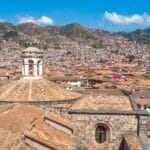Dear reader: This article contains links to products and services that I may be compensated for, at no extra cost to you.
The Cusco Religious Circuit Ticket is a tourist pass that gives you access to three religious sights in Cusco. It used to be four sights, but one of them is currently under major renovations and is closed. These are some of the top things to do in Cusco, but there are so many more not on the pass.
The pass also goes by the names “Boleto Religioso Arzobispado” and “Boleto Integral”.
This is a very simple pass. You won’t have to spend much time thinking about. It’s not as important, expensive, or complicated as the Cusco Tourist Pass (Boleto Turistico), which can be purchased here.
So, to get right to the point, I’m going to keep this post short and sweet.
Table of Contents
Cusco Boleto Religioso Fast Facts
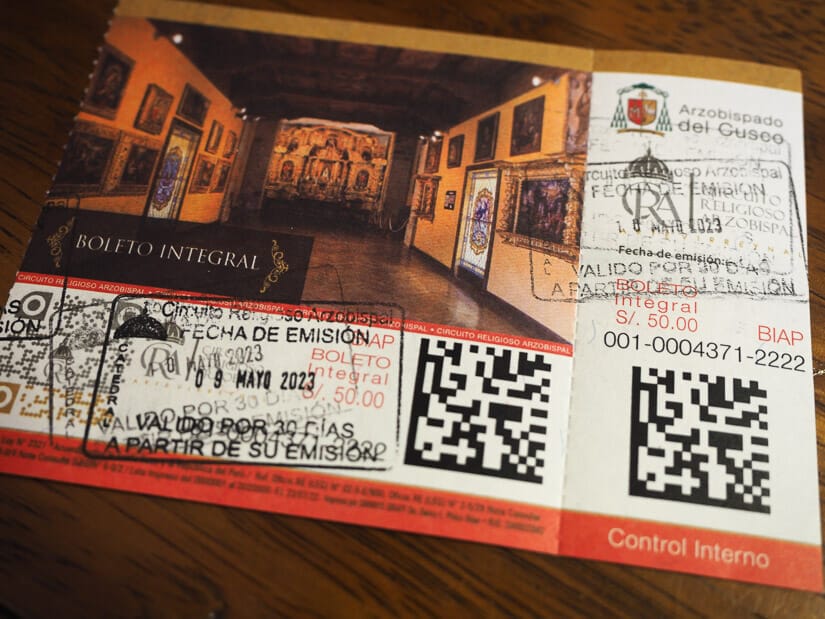
- How much is the pass? 50 soles (USD 14)
- What is included? 1. Cusco Cathedral 2. Museo de Arte Religioso 3. San Cristobal Church
- Why not 4 sights? San Blas church used to be included as well. But, as of 2023, the church is undergoing significant renovations and is closed to the public, so it was removed from the pass.
- Where to Buy It: At any of the 3 sights.
- Possible to purchase online? No
- How much money do you save? If you visit all 3 sights, the pass will save you a mere 10 soles (USD 2.75). Individually, the sights cost 40 soles (Cathedral), 10 soles (Museo de Arte Religioso) and 10 soles (San Cristobal Church).
- Is it necessary? No, you don’t have to buy this pass. Unlike the Boleto Turistico, you can just enter and pay for these 3 sights individually.
- How long is it valid for? The Boleto Religioso is valid for 30 days from the time of purchase. This is unnecessarily long, as you can easily visit these 3 sights in one day.
I wish they would make the Boleto Turistico (which includes 16 sights, some of them very big and far apart) longer, instead! Currently that pass is only valid for 10 days, so I had to buy two of them for my longer stay in the region.
What Are the Three Places Included?
The Boleto Religioso includes entrance to the below three sights. Of the three, the Cusco Cathedral is one of the city’s top attractions and I highly recommend it.
The other two are also worthwhile, but aren’t absolute must-sees. Only include them if you have time and/or really want to see them. To learn about the many other museums not included on this ticket, see my guide to the best museums in Cusco.
Cusco Cathedral
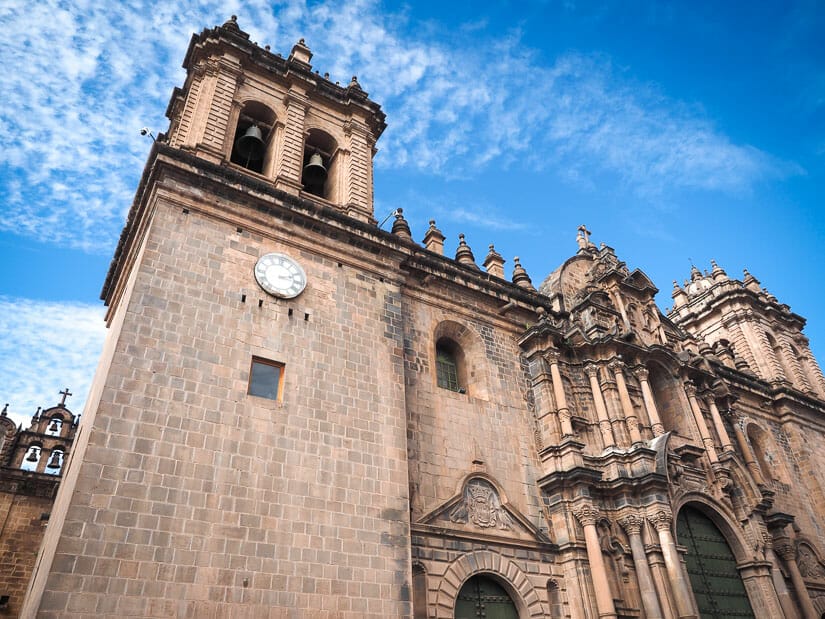
Cusco Cathedral, or Cathedral Basilica of the Assumption of the Virgin, is the city’s main cathedral and headquarters of the Archdiocese of Cusco. The Spanish built it on top of the former palace of the Inca Wiracocha, using stones they stole from Sacsayhuaman, the ruins above the city (see my guide to the best ruins around Cusco).
The Cathedral has a relatively plain Renaissance exterior and a more ornate Baroque interior. The inside is truly impressive and filled with over 400 magnificent Cusco School paintings and other works of art.
These include the famous Last Supper painting, in which Jesus and his disciples can be seen about to feast on guinea pig. It also includes the oldest painting in Cusco, showing locals parading a statue of Jesus around after the great 1650 earthquake. The statue itself can also be seen in the Cathedral.
The Cathedral has two auxiliary chapels. You will actually enter through Iglesia de Triunfo (to the right of the Cathedral when facing it). On the inside, you’ll connect to the Cathedral, then you’ll exit via the Sagrada Familia church on the left side.
Masses take place from 6 AM to 10 AM daily. The visiting time is from 10 AM to 6 PM. It’s respectful to dress appropriately, and no photography is allowed inside.
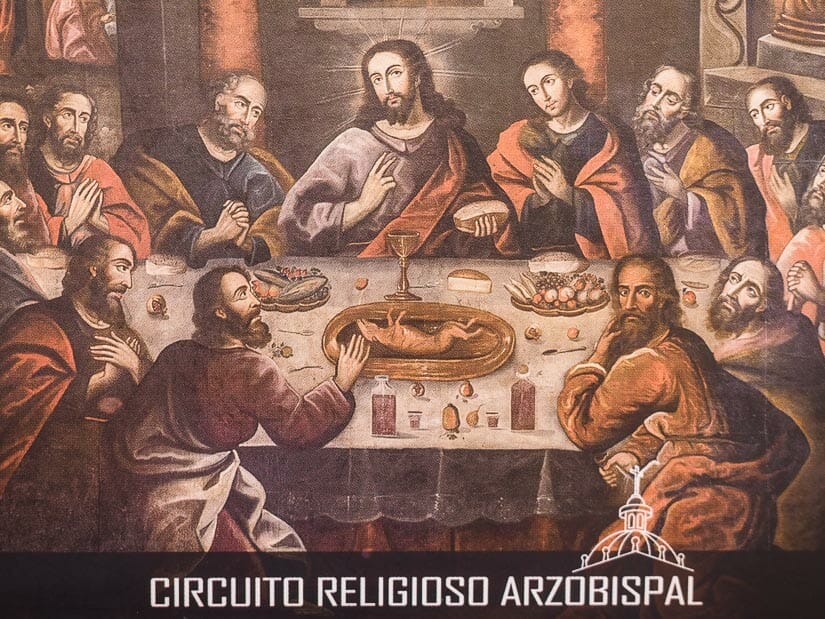
Museo de Arte Religioso
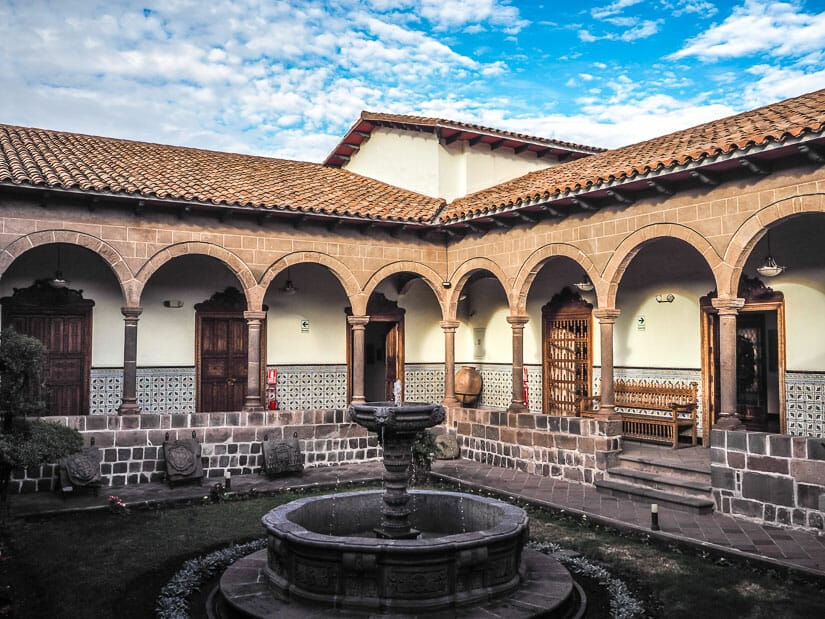
The Museum of Religious Art (Museo de Arte Religioso) is housed in the Archbishop’s Palace (Palacio Arzobispal del Cuzco). The Spanish-built palace was home to archbishops for centuries, but since 1966 has been converted into a museum.
From the lanes outside the palace, you can see the famous 12, 13, and 14-angled stones on its exterior walls (no entrance ticket required to see them).
This museum houses one of the best collections of Cusco School paintings in the city. There’s a whole room devoted to paintings of the Virgin Mary, a common theme in the school, as well as several works by the Cusco School master Diego Quispe Tito.
Besides paintings, there are a few other religious artifacts, as well as a small but very beautiful 18th century chapel with a gold-plated baroque altar. The lovely courtyard also has fine tile work.
No photography is allowed inside, except in the small courtyard (traveler’s tip: if you want the chance to photograph Cusco School paintings, the only place I visited that allowed it, with no flash of course, was the Museum of Monastic Life inside Santa Catalina Monastery, which focuses on the life of nuns).
The Museum of Religious Art is only a few minutes’ walk from Cusco Cathedral, in the busy tourist areas directly east of Plaza de Armas, before the streets start climbing uphill to San Blas neighborhood. This area is full of hotels, restaurants, and other tourist amenities.
It is open 8 AM to 6 PM every day except Sunday.
San Cristobal Church
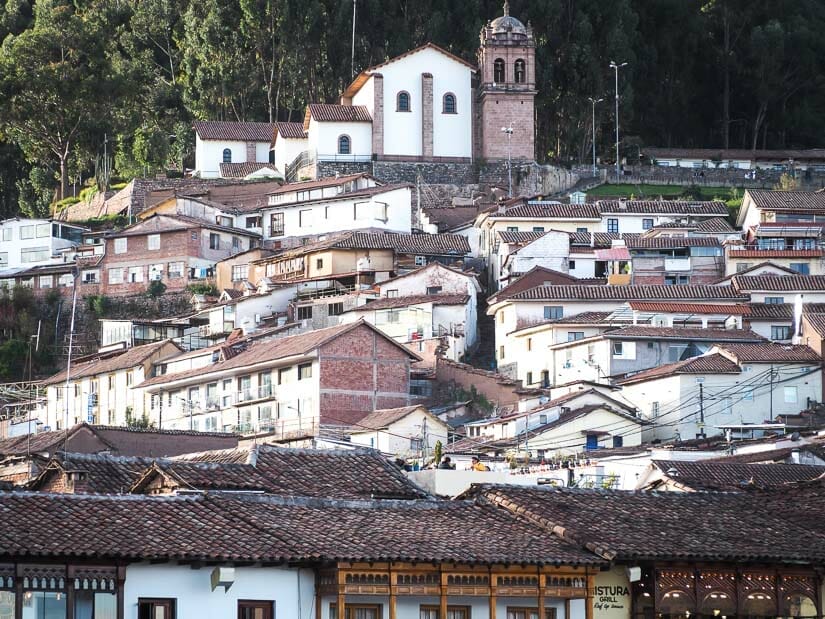
It’s hard to miss San Cristobal Church, as it overlooks the city from vantage point directly north of the Plaza de Armas. It sits on the valley slope just below the ruins of Sacsayhuaman, which you can’t actually see from the city (the large cross on the hill above the church denotes the edge of the ruins).
The interior of the church won’t blow you away, especially compared to the much more impressive churches and cathedrals around Plaza de Armas (see a list of them at the end of this article). However, what you really should come here for is the view.
From the small plaza beside the church (Mirador de Plaza Sán Cristobal), you can enjoy fantastic views looking down on Cusco and the Plaza de Armas. When I was there, I was lucky enough to see a beautiful rainbow just after some rain (see image below). There’s also a cross on the plaza (see the middle image in the cover photo of this article).
While the church interior is only worth a few minutes of your time, the ticket also gives you access to the Bell Tower, which is more fun. Climb up there to enjoy and even higher view (see second image below).
You can walk from Plaza de Armas to San Cristobal Church in 10 minutes, but those are 10 minutes of climbing steeply uphill.
Rather than walking up just for this church, I suggest that you combine it with a visit to neighboring San Blas. The very pretty San Blas sights of Siete borreguitos and Sapantiana Aqueduct are just a few minutes away. San Cristobal Church could also be a small detour for anyone walking up to or down from Sacsayhuaman ruins, which is exactly what I did.
See the San Blas section of my Cusco things to do guide for info about all these places.
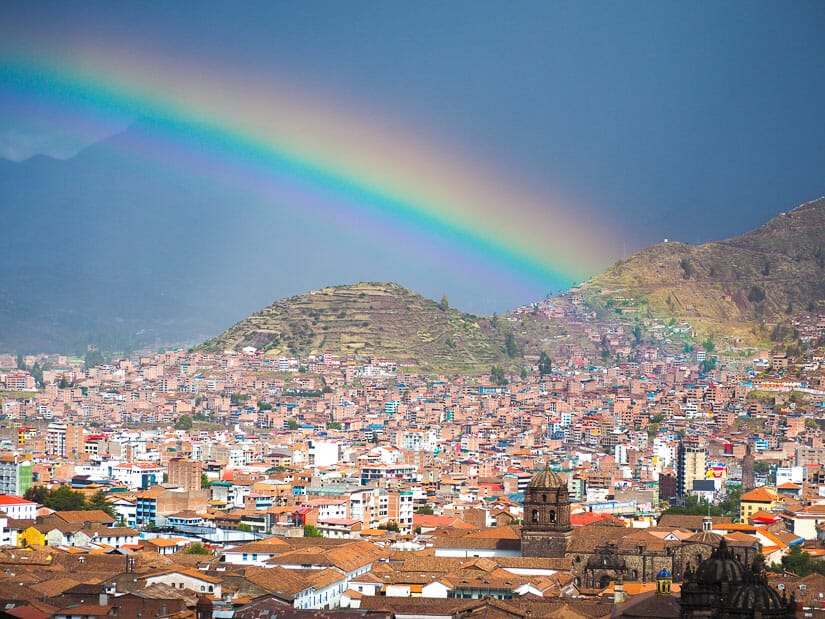

Is The Ticket Worth the Money?
If you were planning to visit these three sights anyways, then getting the pass is a no-brainer. Yeah, you’ll only save 10 soles, but why not.
Even if you get the pass and only make it to two of the sights, then you’ll still break even. Visiting Museo de Arte Religioso is easy enough because it is very close to Cusco Cathedral.
And if you buy the pass at Cusco Cathedral but never make it to the other two sights, well, you’ll lose 10 soles (USD 2.75), less than the cost of a pisco sour.
How the Pass Could be Better
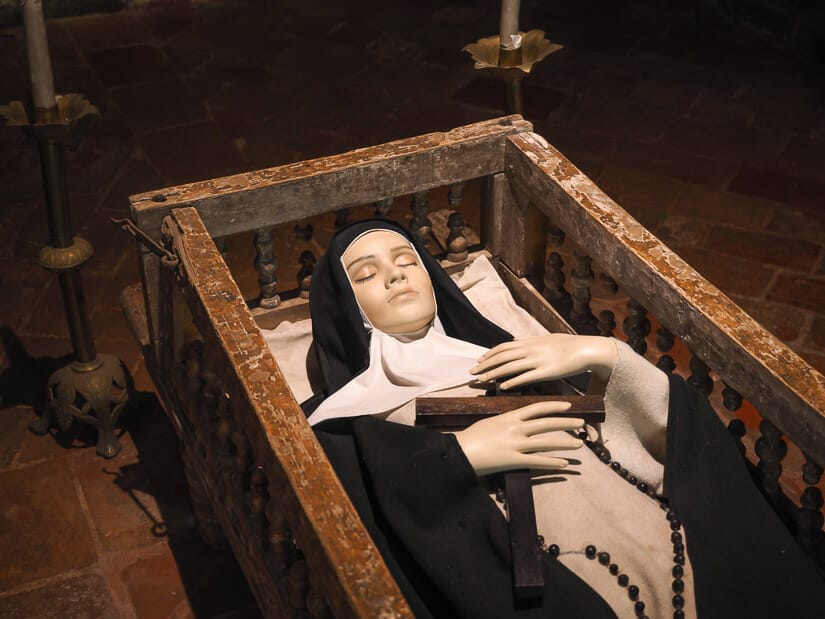
This pass would be so much better if it included most or all of the church museums in Cusco. With only 3 churches included, this “pass” is practically pointless.
There are several other really impressive church museums in Cusco, and all of them currently charge an entrance fee of 8 to 20 soles. Ones I personally visited included:
- Church of the Society of Jesus (10 soles) This is the other large church on Plaza de Armas
- La Merced Basilica and Convento (20 soles) A short walk away from Plaza de Armas
- San Francisco Convent Museum and Catacombs (15 soles) Featuring South America’s largest painting
- Museum of Monastic Life at Santa Catalina Monastery (8 soles) Showing the life of nuns, photography allowed
- Qoricancha and Santo Domingo Church (15 soles) Another of the city’s top attractions, with Inca temples inside a Spanish church
If all of these churches were included, it will feel like a proper pass. Visitors interested in religion or churches would feel a sense of accomplishment or pilgrimage by visiting them all and checking them off the pass. I’m sure there’s some reason, perhaps politics between the churches (if you know, please share in the comments below!) Just some wishful thinking here.
Now that we’ve got that covered, check out some of my longer Cusco guides, including the best places to eat, things to do, museums (coming soon), and ruins around Cusco!



